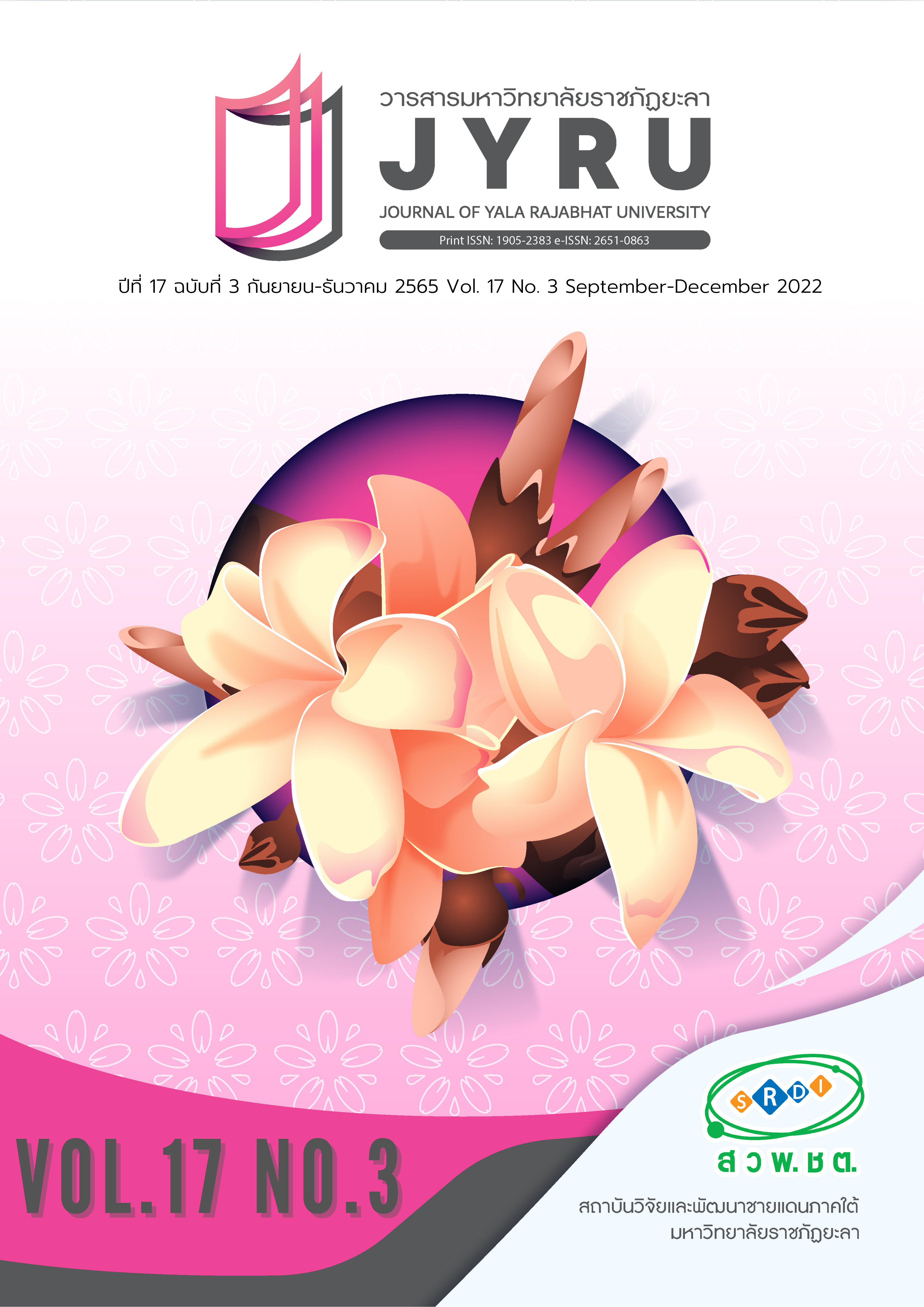Essential Skills for Youth in the Workforce of the 21st Century: A Case Study of Southern Thailand
Main Article Content
Abstract
The objectives of this study were to explore essential skills development needs for youth in the south of Thailand for the workforce in the 21st century and to compare essential skills for youth in the workforce of the 21st century and employers’ needs. The study was used a mixed method and multilevel sampling design with the aid of questionnaires and interviews. In this qualitative study, data were gathering from 60 key informants consisting of 10 employers, 18 teachers and 32 leading students. Data was analyzed using typological analysis. Regarding the quantitative aspect of this study, data were gathering from 1,902 subjects consisting of 400 employers, 800 high school students and 702 first year university students. Data was analyzed using means, standard deviation and one-way ANOVA. The results indicated that five of students’ 21st century work skills – communication, digital literacy, critical thinking, creativity, and collaboration – were at a moderate level, with creativity scoring the lowest average. Whereas, the mean levels of self-assessment by the first year university students were at a high level in all types of skills with critical thinking scoring the lowest average. However, when compared with the mean levels of needs by the employers, it was found that the mean levels of self-assessment by high school students and the first year university students were lower than the mean levels of needs by the employers in four types of skills; communication, digital literacy, critical thinking, and creativity at the statistical significant level of .001. Accordingly, these four type of skills are the essential skills that should be preparing and enhancing for youth during the high school level. Therefore, organizations responsible for educational management should attach importance to these skills and include them in the core curriculum to prepare students to be ready for the workforce in the 21st century.
Article Details

This work is licensed under a Creative Commons Attribution-NonCommercial-NoDerivatives 4.0 International License.
Copyright Notice articles, information, images, etc. was published in this Journal of Yala Rajabhat University is a copyright of the journal Yala Rajabhat University. If any person or deparment wants to bring all or part of it for publish or take any action. Authorization is required in written form from the Journal of Yala Rajabhat University only.
References
Akkarathitiphong, C. (2019). Skills demand for the labor market in the 4.0. Journal of Management Sciences Review Humanities and Social Science, 21(1), 181-190. (in Thai)
Bunkrong, D. (2018). Analysis of the education management approach with driving education to Thailand 4.0. Asian Journal of Arts and Culture, 17(2), 1-25. (in Thai)
Centre for the new economy and society. (2018). The future of jobs report 2018. Geneva, World Economic Forum.
Delaney, H. (2019). Education for the 21st century: placing skills development at the heart of education. Retrieved July 18, 2019, from: https://www.unicef.org/ thailand/stories/ education-21st-century.
Laar, E. (2017). The relation between 21st-century skills and digital skills: a systematic literature review. Computers in Human Behavior, 72 (2017), 577-588.
National statistical office. (2017). The 2017 Industrial census, basic information: Southern Region. Bangkok: Text and Journal Publication. (in Thai)
Office for promotion of the learning society and the quality of youth. (2013). Reality in the Life of Thai Youth: Challenging Educational Reform. Bangkok: Office for promotion of the learning society and the quality of youth. (in Thai)
Office of the national economic and social development council. (2013). Report of the population projections for Thailand 2010-2040. Bangkok: Amarin Printing and Publishing Public Company Limited. (in Thai)
Office of the national economic and social development. (2020). Generation Y development to support national movements. Social situation and outlook, 18(1), 46-57. (in Thai)
Puncreobutr, V. (2016). Education 4.0: New Challenge of Learning. St. Theresa Journal of Humanities and Social Sciences, 2(2), 92-97.
Registrar’s division. (2019). Number of eligible applicants for the academic year 2019. Retrieved September 15, 2019, from: https://reg.psu.ac.th/StatStudentHatYai/20_newStudentPerYear/. (in Thai)
Roongsangjun, T. (2018). Preparedness for the 4th renovation of Thai labor. Journal of Social Work, 26(2), 172-204. (in Thai)
Sittiraj, T., Pakdeewong, P., Kornpuang, A., & Chanbanchong, C. (2015). The Scenarios of administration of secondary education in Thailand in the next two decades. Journal of Education Naresuan University, 17(3), 71-81. (in Thai)
The Secondary Educational Service Area Office 11. (2019). Educational institutions under Surat Thani Province. Retrieved January 2, 2020, from: http://www.secondary11.go.th/2016/th/school_surat.php. (in Thai)
The Secondary Educational Service Area Office 16. (2019). Educational institutions under Songkhla Province. Retrieved January 2, 2020, from: https://data.bopp-obec.info/emis/index_area.php?Area_ CODE=101716. (in Thai)
Tianroek, C., Traiwichitkhun, D., & Siriparp, T. (2015). Development of measurement model of life and career skills of upper secondary school student in 21st century. An Online Journal of Education, 10(4), 224-237. (in Thai)
Wittayasin, S. (2018). Education Challenges to Thailand 4.0. International Journal of Integrated Education and Development, 2(2), 29-35.
Yongsorn, C. (2017). Educational waste affects the quality of graduates of Thai higher education. Journal of Education: Faculty of Education, Srinakharinwirot University, 18(1), 1-9. (in Thai)


